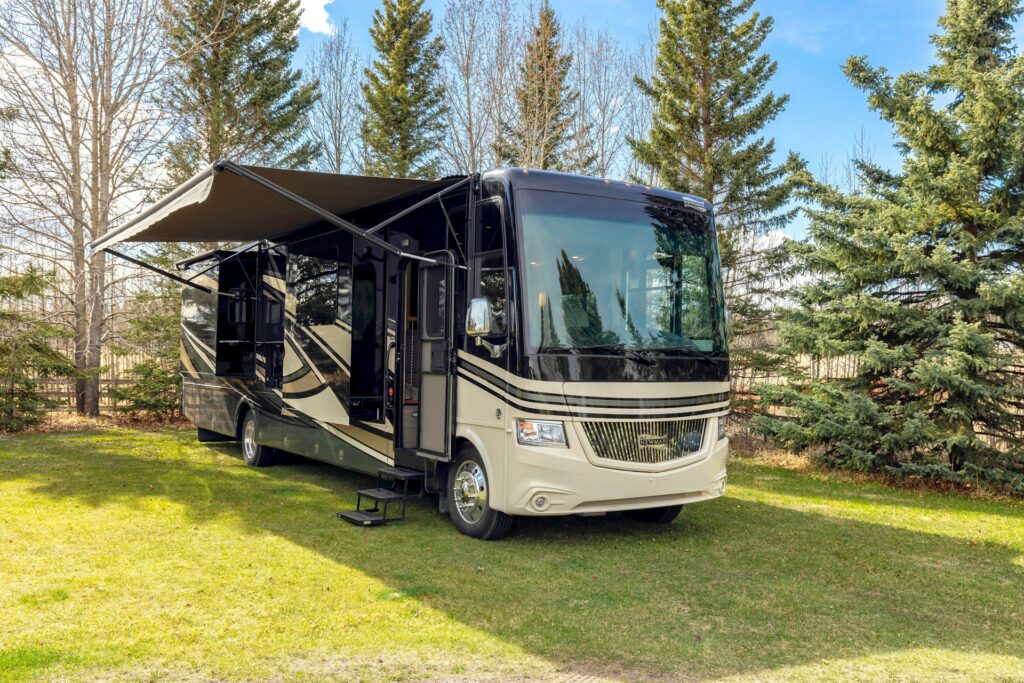Distinguishing between smokybrown and American cockroaches is important for homeowners dealing with large cockroach infestations, as these two species require different control approaches despite their similar size and indoor invasion tendencies. Both are substantial roaches that can exceed one inch in length and create serious sanitation problems when they establish populations around homes. However, they differ significantly in their preferred habitats, moisture requirements, and seasonal behavior patterns.
What are smokybrown roaches?
Smokybrown cockroaches (Periplaneta fuliginosa) are large outdoor roaches measuring 1 to 1.5 inches in length with distinctive uniform mahogany or dark reddish-brown coloration that gives them their common name. These roaches are strong fliers and are often attracted to lights at night, making them frequent visitors around outdoor lighting, windows, and entry points during evening hours.
Smokybrown roaches require high humidity levels and are typically found in outdoor environments including tree holes, mulch beds, woodpiles, and areas with heavy vegetation. They prefer moist, sheltered locations and are particularly common in the southeastern United States where climate conditions support their moisture requirements year-round.
These roaches are primarily outdoor inhabitants that occasionally invade homes when seeking food, water, or shelter, particularly during hot, dry periods or adverse weather conditions. They’re excellent climbers and may enter structures through upper-level openings, attic vents, or gaps around rooflines rather than ground-level entry points.
Smokybrown cockroaches feed on decaying organic matter, plant materials, and occasionally scavenge human food sources when they gain indoor access. Their outdoor lifestyle makes them less likely to establish permanent indoor populations compared to other cockroach species, though they can become problematic when outdoor conditions drive them to seek indoor shelter.
What are American roaches?
American cockroaches (Periplaneta americana) are among the largest cockroaches commonly encountered around homes, measuring 1.5 to 2 inches in length with reddish-brown coloration and distinctive yellowish patterns behind their heads. Despite their name, these roaches are actually native to Africa but have become established worldwide through human transportation and are now common throughout much of the United States.
American cockroaches prefer warm, moist environments and are commonly found in basements, crawl spaces, sewers, steam tunnels, and areas around water heaters, pipes, and plumbing fixtures. They’re particularly associated with commercial buildings, restaurants, and multi-unit housing where they can access food sources and favorable environmental conditions.
These roaches are capable fliers, though they typically prefer to run when disturbed. They’re omnivorous scavengers that feed on a wide variety of organic materials including food scraps, paper, fabric, dead insects, and even hair or skin cells. Their adaptability to diverse food sources makes them persistent indoor invaders once they gain access to structures.
American cockroaches can live for extended periods, with adults surviving 6-12 months under favorable conditions. Their longer lifespan and ability to reproduce throughout the year make them capable of establishing significant indoor populations that can persist for extended periods without outdoor supplementation.
What are the main differences between smokybrown roaches and American roaches?
Smokybrown and American cockroaches differ in several key characteristics that affect identification and cockroach control strategies. Size differences show American roaches being larger (1.5-2 inches) compared to smokybrown roaches (1-1.5 inches). Coloration patterns distinguish uniform mahogany smokybrown roaches from American roaches’ reddish-brown bodies with yellowish markings behind their heads.
Habitat preferences contrast significantly—smokybrown roaches are primarily outdoor insects requiring high humidity, while American roaches prefer indoor environments with consistent moisture access like basements and areas near plumbing. Moisture requirements show smokybrown roaches being more dependent on outdoor humidity, while American roaches adapt better to indoor conditions.
Flight behavior demonstrates both species can fly, but smokybrown roaches are more likely to be attracted to lights and fly toward evening lighting sources. Indoor establishment differs as American roaches readily establish permanent indoor populations, while smokybrown roaches typically remain outdoor inhabitants that occasionally invade structures.
How to prevent a smokybrown roach infestation
Smokybrown roach prevention focuses on outdoor habitat modification and reducing attractants around structures:
- Reduce outdoor moisture sources: Eliminate standing water, fix drainage problems, and address sprinkler overspray that creates humid conditions attractive to smokybrown roaches.
- Remove outdoor shelter: Clear leaf litter, mulch accumulations, and organic debris from around foundations where smokybrown roaches nest and hide.
- Seal upper-level entry points: Focus on attic vents, gaps around rooflines, and upper-story openings where flying smokybrown roaches typically access structures.
- Minimize outdoor lighting: Reduce unnecessary outdoor lighting or use yellow/sodium lights that are less attractive to flying smokybrown roaches during evening hours.
- Trim vegetation away from structures: Maintain clearance between plants and buildings to reduce humid microclimates and eliminate bridging pathways for climbing roaches.
How to prevent an American roach infestation
American roach prevention emphasizes indoor environmental control and eliminating moisture sources that support indoor populations:
- Control indoor humidity: Use dehumidifiers in basements and crawl spaces, fix plumbing leaks, and address moisture problems that create favorable conditions.
- Seal ground-level entry points: Focus on gaps around pipes, foundation cracks, and basement entrances where American roaches typically access indoor areas.
- Eliminate food sources: Store food in sealed containers, clean up crumbs regularly, and address garbage storage that provides feeding opportunities.
- Address plumbing areas: Inspect and seal areas around water heaters, pipes, and plumbing fixtures where American roaches commonly establish territories.
- Regular cleaning maintenance: Vacuum and clean areas where organic debris accumulates, including behind appliances and in storage areas where American roaches might feed and shelter.
When to call a professional
When dealing with smokybrown or American cockroach problems that are affecting your home’s comfort and creating serious sanitation concerns, professional pest control services offer the most effective and comprehensive solutions. At Aptive, our pest control experts can assess the extent of your cockroach infestation and identify the specific species present, which is crucial for determining the most appropriate treatment methods since smokybrown and American roaches require different control strategies based on their distinct habitat preferences and moisture requirements.
If you’ve noticed increased large cockroach activity around your property or are dealing with persistent indoor infestations that continue despite your prevention efforts, don’t wait—contact Aptive today for a free quote.
FAQs about smokybrown and American cockroaches
Here are some frequently-asked questions by homeowners on dealing with American and smokybrown cockroaches.
Q: Are smokybrown cockroaches dangerous?
While smokybrown cockroaches don’t bite or sting, they are dangerous from a health perspective due to their ability to spread diseases and allergens. They carry bacteria, viruses, and parasites on their bodies and in their digestive systems, contaminating surfaces and food sources through contact and waste deposits.
Their shed skins and feces contain allergens that can trigger asthma attacks and allergic reactions, particularly in children. Smokybrown roaches can spread salmonella, E. coli, and other pathogens that cause food poisoning and gastrointestinal illness, making them significant health hazards despite their primarily outdoor lifestyle.
Q: Are American cockroaches dangerous?
Yes, American cockroaches are dangerous from a health standpoint due to their disease-carrying capabilities and allergen production. They transmit numerous pathogens including salmonella, E. coli, staphylococcus, and streptococcus that cause serious foodborne illnesses and infections. Their shed skins, feces, and body parts contain potent allergens that trigger severe asthma attacks and allergic reactions, particularly problematic for children and sensitive individuals.
American roaches contaminate far more food than they consume, forcing disposal of entire food supplies and creating ongoing sanitation problems that pose significant health risks to household members.
Q: Do you get rid of smokybrown cockroaches and American cockroaches the same way?
No, smokybrown and American cockroaches require different control approaches due to their distinct habitat preferences. Smokybrown roach control focuses on outdoor habitat modification, reducing moisture around structures, and sealing upper-level entry points since they’re primarily outdoor insects.
American roach control emphasizes indoor environmental management, addressing basement and plumbing area moisture, and sealing ground-level entry points. Treatment locations differ as smokybrown roaches need outdoor perimeter treatments, while American roaches require indoor baiting and treatment programs. Professional pest control services tailor strategies to each species’ specific behaviors and preferred environments.









